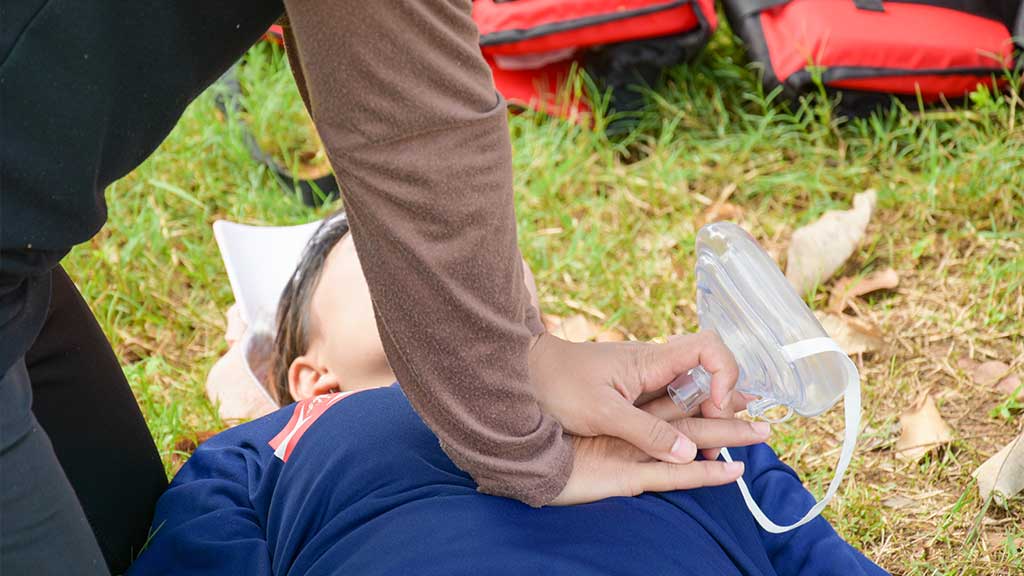What comes to mind when you hear or see BLS vs CPR? Do you know what these terms (CPR vs BLS) stand for? An emergency doesn’t come with a sign. Nevertheless, one must remain alert to do whatever is possible when such a situation occurs.
Basic Life Support (BLS) and Cardiopulmonary Resuscitation (CPR) are essential life-saving emergency techniques. To use this technique, you must acquire the necessary credentials or certification. These credentials give people the information and abilities they need to react appropriately when people’s lives are in danger. CPR and BLS are interrelated, resulting in confusion for most people
Although they differ in a few ways, they share several things. The differences between CPR and BLS, the training programs for each, and the use of each in a range of healthcare and non-healthcare contexts will all be covered in detail in this article.
What is Cardiopulmonary Resuscitation (CPR)?
CPR is an emergency treatment used to save the lives of patients whose hearts ceased beating. Although the modern form of CPR was created in 1960, mouth-to-mouth resuscitation techniques have been used for centuries.
To maintain oxygen flow throughout the victim’s body and to keep their heart beating until aid arrives, CPR entails breathing air into their mouth. By doing CPR, you can also improve the victim’s heart’s response to defibrillation, which is another life-saving technique.
Anyone can earn a CPR certification; it may even be necessary, depending on your line of work. Eventually, learning the 7 steps of CPR is essential for everyone to be equipped with life-saving skills. Hands-Only CPR and conventional, or traditional, CPR are the two forms of CPR that exist.
Conventional CPR
Chest compressions and rescue breathing are the two phases of traditional CPR. Two breaths for every thirty compressions are the proper ratio for one cycle of CPR for an adult. Two rescue breaths for every fifteen compressions are the cycle for more minor children and newborns when two rescuers are performing CPR. But two breaths per thirty seconds is okay with just one rescuer. In this manner, the rescuer won’t have to stop too soon to finish the CPR because they can perform it longer.
Hands-Only CPR

All that is required for hands-only CPR is swiftly and forcefully pressing on the victim’s chest center. Delivering rescue breaths is not a part of it, unlike traditional CPR. The goal of performing CPR with only your hands is to start the victim’s blood flowing until emergency personnel arrive.
What is Basic Life Support (BLS)?
In addition to CPR, basic life support (BLS) is a higher standard medical care that is provided by first responders, paramedics, public safety personnel, healthcare providers, and trained bystanders. BLS provides life-saving care to someone experiencing breathing problems or cardiac arrest until they can receive more advanced medical care at a hospital. BLS vs first aid
BLS involves performing:
- A preliminary valuation
- Airway care
- CPR
Because the average individual lacks the medical expertise required to evaluate a patient’s condition or perform airway management, Basic Life Support (BLS) is designed for use by medical professionals or those with prior medical training. Note that BLS vs first aid is different. While anyone can administer first aid services, professions such as dentists, babysitters, EMTs, doctors, caregivers, teachers, pharmacists, paramedics, firefighters, nurses, lifeguards, and police officers require BLC certification.
Benefits of BLS and CPR certification
Whatever the employment path you decide to take, earning a BLS or cardiopulmonary resuscitation certification has several advantages. The following are some benefits of certification:
Self-assurance and readiness
You can respond to emergencies confidently if you have received training in CPR and BLS. It can instill confidence and ease your mind to know that you may be able to save a life.
Enhanced employability
Certifications in CPR and BLS are frequently necessary or desired for various positions, particularly in the medical field. These certificates improve your CV and increase your marketability as an applicant.
Potential to save lives
Knowledge of CPR and BLS equips you to respond quickly to life-threatening situations. In dire circumstances, your actions have the power to alter outcomes and save lives significantly.
Safety both individually and collectively

Certifications in CPR and BLS are applicable outside of the workplace. They allow you to deal with crises in your daily life and protect the safety and well-being of you, your loved ones, and the people around you.
BLS vs CPR: Certification Differences
The range of skills taught in basic life support certification and CPR training is where the main distinctions between the two are found. BLS certification covers extra skills, including using AEDs, handling choking episodes, and identifying and responding to respiratory problems, whereas CPR certification covers the CPR technique. A BLS certification gives people access to a broader range of life-threatening conditions and a more thorough grasp of emergency responses.
The intended audience is another BLS vs CPR distinction. Those who wish to be ready for emergencies in different environments, such as businesses, schools, and community organizations, should pursue CPR certification.
In addition, people who want to learn basic life-saving techniques, such as parents and caregivers, may find it helpful. On the other hand, to guarantee that they can deliver prompt and efficient care in emergencies, healthcare professionals frequently need to obtain their BLS certification.
For healthcare practitioners, BLS certification renewals are required more frequently—every one to two years—than CPR certification renewals, which require renewals every two years. In addition, BLS is utilized in medical settings like clinics, hospitals, and ambulance services. In contrast, CPR can be performed in various non-medical contexts, such as public spaces, schools, and sporting events.
How to Acquire BLS and CPR Certification
Several organizations and training programs offer CPR and BLS certifications. Online and in-person courses are provided by numerous approved organizations. Online courses give students the flexibility of self-paced learning, while in-person courses offer practical instruction and the chance to practice CPR on manikins.
Look into groups like the American Heart Association (AHA), the American Red Cross, or the National Safety Council to locate a trustworthy CPR or BLS training course. After students complete the courses, these organizations offer certifications and standardized training programs. Ensure the program you select is approved and recognized by the organizations or companies you plan to engage with.
BLS vs CPR Re-certification

CPR and BLS training require re-certification courses since it’s critical to maintain your proficiency in life-saving techniques regardless of the certification type you select. Before having to recertify, CPR and BLS certifications are valid for two years.
Remember that you must be certified either currently or within the last 30 days to participate in a re-certification course. Since you completed your first certification with essential skills, the CPR and BLS renewal courses are shorter and more accessible to finish.
BLS vs CPR certification: What to Choose?
Your work ambitions and personal interests will usually determine which certification you should pursue: CPR or BLS. The ideal certification to get if you work in the medical industry or as a first responder is BLS. CPR certification might be wise for people who want to learn how to administer basic, life-saving CPR until emergency responders arrive. These people could be parents, teachers, daycare providers, fitness instructors, etc. The kind of certification you require will frequently depend on the regulations in your specific field.
Conclusion
Comparing BLS certification vs CPR certification is okay. Being certified in BLS or CPR looks fantastic on a resume, but the main advantage of both training programs is that they equip you with the skills necessary to save lives!
You can never predict where or when cardiac arrest will occur. Fortunately, people can take specific actions to stop cardiac arrest. Acquiring knowledge about the BLS vs CPR distinctions and equipping yourself with life-saving techniques is an excellent initial step that will enable you to react promptly, appropriately, and self-assuredly in an emergency.


![Self-Care for Caregivers [Tips from Experts]](https://caregivercourses.net/wp-content/uploads/2024/07/Self-Care-for-Caregivers-Tips-from-Experts-300x169.jpg)


